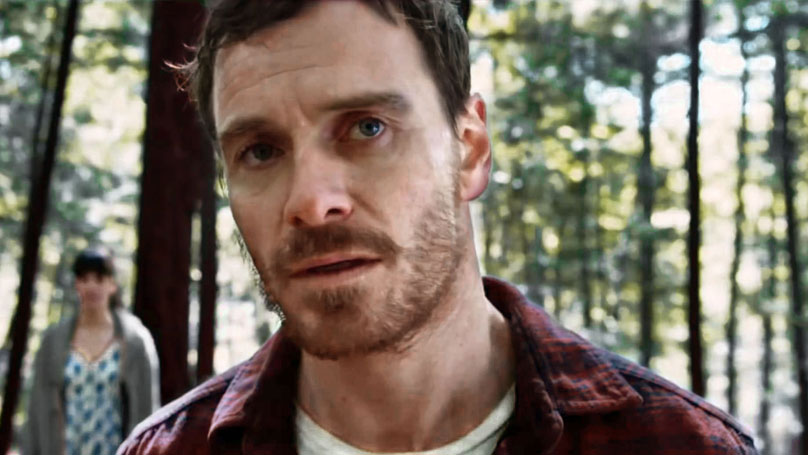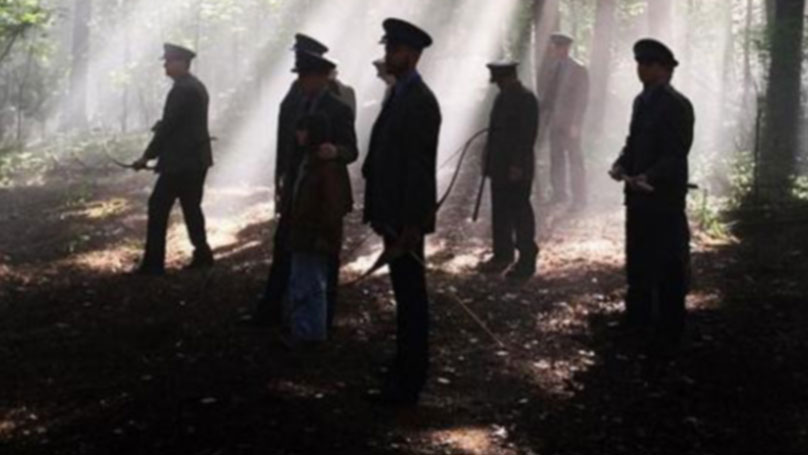
|

|

|

|

|

|

|

|

|

|

|

|


With spoilers, we delve into what we think is X-Men: Apocalypse's most tense and effective moment to see why it works...
This article originally appeared on Den of Geek UK.
The following contains major spoilers for X-Men: Apocalypse and Days Of Future Past.
It's one thing to stage an effective-looking car chase or shoot-out, but effectively fusing action with suspense, story and drama is quite another. You can always tell when an action sequence isnít working dramatically in a movie; the bullets are flying, glass is breaking, bodies are falling but somehow the power of the moment doesn't break through screen. Entire cities can be razed, but if we don't connect with a movie's characters and sense that they're in genuine danger, all you're left with is an exercise in visual effects.
X-Men: Apocalypse hasn't exactly gone down a storm with critics, and its getting a mixed reaction from audiences, as well. But even though Bryan Singer's superhero sequel isnít what weíd call perfect, one moment in particular stands out - at least for this writer - as something quite special.
Here's a brief recap. It's a decade since the events of Days Of Future Past, and Magneto, otherwise known as Erik Lehnsherr, is a wanted man following his attempted assassination of President Nixon. Clearly keen to get as far away from America as possible, Erik heads to Poland and starts a new life for himself; by the time we catch up with him in Apocalypse, he has a wife and child, a nice house in the countryside (complete with an adorable clutch of fluffy chickens) and a decidedly hands-on job at an iron foundry. For years, it seems as though Erik's left his life as a mutant, outcast and wanted criminal far behind - that is, until he uses his abilities to save a co-worker from an industrial accident and winds up giving away his true identity.
That Erik will have his happiness snatched away isn't difficult to predict, and accusations that it's just another example of "fridging" - that is, killing a loved one to create drama - aren't without foundation. But it's the way writer Simon Kinberg sets up and stages the deadly confrontation that makes it stand out in a film full to overflowing with flashy CGI.
A group of police officers snatch Erik's daughter and lure Erik to a woodland clearing - they know he's Magneto, and that confronting him in a place where there isnít any metal he can use to fight them will create a tactical advantage (cunningly, they've also armed themselves with Magneto-proof bows and arrows).
Realizing their daughter is missing, Erik and his wife rush out into the woods, where they find the girl captured by the police. The officers explain that they know who Erik is, and at first, it looks as though heíll give himself up quietly. What the foolish cops don't realise is that Erik's daughter has inherited some of her father's mutant powers - she has a certain amount of control over animals. The police are attacked by a flock of birds, and the daughter uses the confusion to rush to her mother's arms. But the chaos also causes one of the men to loose an arrow, which, in a grim twist of fate, kills Erik's wife and daughter with a single stroke.

In his shock and grief, Magneto seizes the locket hanging round his daughter's neck with his telepathic powers and, flicking it through the air like a bullet, leaves the entire group of officers falling to the ground like dominoes.
Cannily, Singer emphasises the emotional impact of the scene rather than the violence. The camera's gaze is fixed on Erik, the light of humanity dimming in his eyes as he realises his loved-ones are dead. The deaths occur in the background, slightly out of focus; we're given just enough visual and aural information to understand that they've been struck in the throat by the flying pendant. The coldness and immediacy of those deaths makes them all the more shocking; had a more conventional action sequence ensued, the horror and weight of the situation - and its dramatic effect on Erik's psyche - would probably have evaporated.
Simon Kinberg recalls that the scene had its genesis about two years ago, when he and Michael Fassbender were promoting the previous X-Men film.
"When we did Days Of Future Past," Kinberg tells us, "we did one of the premieres here in London, and Michael Fassbender and I took a plane from here to Moscow, just the two of us for the Moscow premiere the next day. We were on the plane and we were talking about what the next movie would be after Days Of Future Past, and what would be the most shocking place to start Magneto. And what we decided was, the most shocking place is the least violent place. To start him as a family man, living in a nice house, driving a normal car, having a normal job. That seemed really startling."
Kinberg's goal was to engineer a sequence where Erik could become angry and misanthropic enough to join Apocalypse (as played by a very purple Oscar Isaac) in his mission to wipe out the whole of humanity. Giving Erik a family and a taste of happiness - and then brutally jerking that away - serves as the trigger for that darkening mood. Do we necessarily buy that Erik would fall so far in his grief? I'm not so sure we do, but the impact of the scene where the fall begins remains undiminished.
"Once we talked about [Erik's family], then the immediate knee-jerk, reflex response I had was that someone then takes it all away," Kinberg said. "And when they take it all away, he turns, and he turns as dark as we've ever seen him. He's willing to destroy the entire world. We knew it was the Apocalypse movie, so it was like, how do you get him to a place where he's actually willing... he's never been somebody who wants to destroy the entire world. He's a very politically-minded guy. We talked about that being taken away, and then I started to think about that sequence. How do you create a sequence where his wife and daughter are both killed? Have it be a tension sequence, have it be motivated by something he did wrong, and that it exposed him as Magneto."
Having an actor like Fassbender pays dividends, of course. The scene may contain telekinesis and flying keepsakes, but Fassbender commits to the realism. There's a raw quality to his haunted expression which places the scene in stark contrast to so many others in the film. Elsewhere, Singer revels in the fizzy day-glo colors of Apocalypse's bubblegum '80s setting, from the pure comic book styling of Psylocke's outfit to Nightcrawler's Michael Jackson jacket. Yet the surface gloss of the production design often threatens to diminish the effect of an unfolding crisis; the destruction of Professor X's mansion results in a tragedy of its own, but the emotional weight of it vanishes as Quicksilver pulls off another of his bullet-time acrobatics demonstrations. Unless we blinked and missed it, the death of Havok (Lucas Till) doesn't even appear to take place on screen - a muted send-off for a character who's been knocking around in the franchise since First Class.
Likewise the final act, which sets a battle of X-Men versus Apocalypse against a planet literally shaking to its core. The sense of monumental forces colliding should leave us reeling here; instead, I'd argue that the action has a distancing effect. Maybe it's the combined result of seeing actors move around in front of what look suspiciously like flat digital matte paintings. Maybe it's because we've simply seen so many multi-character, wire-fu, laser-blazing superhero smackdowns of late.
Erik's confrontation in Poland, by contrast, is a rare moment where Apocalypse's events hit home. The sequence was clearly shot in a real, dank forest somewhere; you can almost smell the dew in the air and the fallen leaves on the forest floor. The atmosphere seems to seep into Fassbender's performance - in our interview with Bryan Singer the other week, the director spoke briefly of how much impact the scene had, even when surrounded by the film's huge crew.
"It was heart-wrenching to shoot the scene," Singer said. "We were even emotional in the tent, listening to it on the headphones and watching it on the screen. I remember after he did it, I went up to Michael and gave him a big hug and said, 'Thank you. Thank you for that. [Pause] Now I need you to do it again, but this time look over this way...'"
The death of Erik's family is an example of a scene where the writing, acting and direction all align to create a scene with real emotional power. In a movie full of interlocking storylines and crumbling cities, it's a reminder that, sometimes, less really is more.
